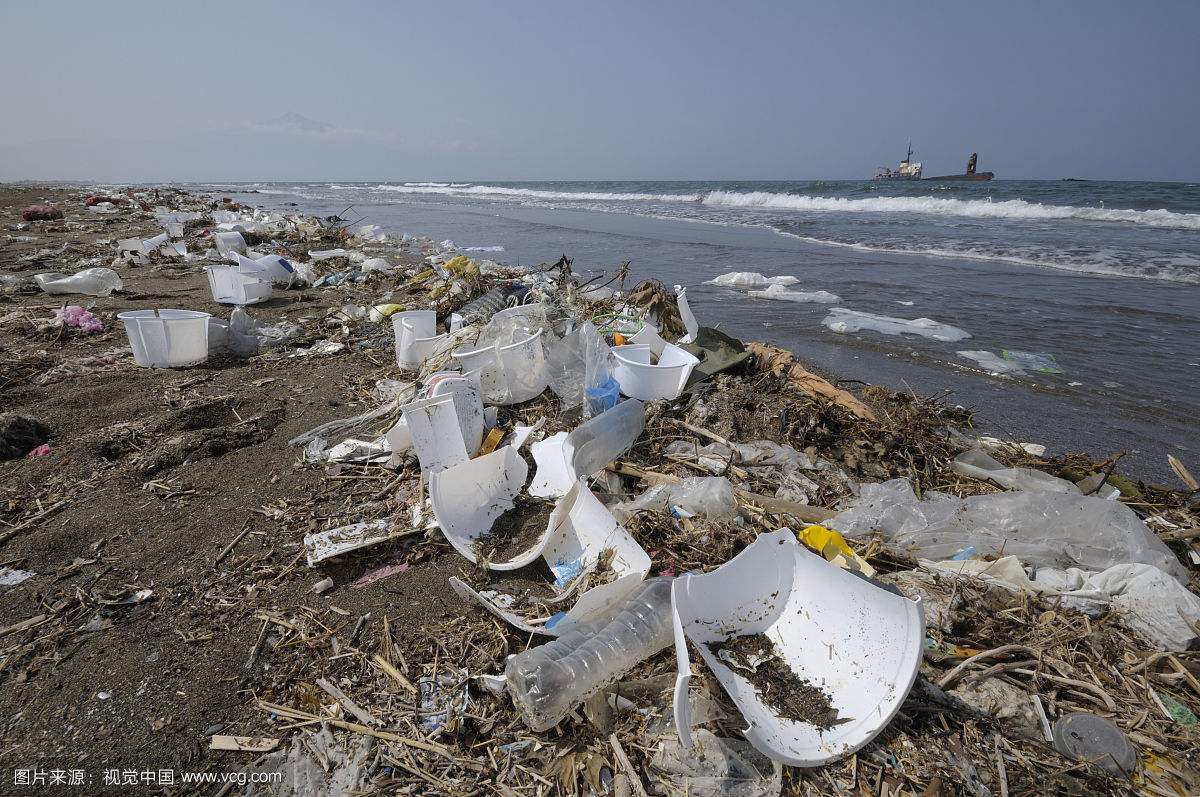蒋高明:《中国生态文明建设》(中英对照)连载之七:向环境污染宣战
2.1.2环境污染比比皆是
2.1.2Environmental pollution is everywhere
改革开放以来,中国经济高速发展,取得了举世瞩目的成就。然而,由于发展方式不合理,造成了资源大量消耗,环境污染加剧,自然生态破坏严重。伴随着发展而来的环境污染和生态破坏,已经成为当前中国面临的严峻问题。
Changes in my homeland epitomize China’s changes in the past 30 years or so. Since the reform and opening up, China has made remarkable achievements in economic development. However, an irrational growth mode has resulted in massive consumption of natural resources, aggravating environmental pollution and brought about serious ecological damage. Environmental pollution and ecological deterioration arising from development have become a severe problem for current China.
(1)水污染
(1)Water pollution
先来说说水污染。上面提到的捧起来就能喝的河水,在中国北方几乎绝迹了。取而代之的是又黑又臭的死寂的河流。中国已查明的各类源头废水排放总量达2092.8亿吨,相当于每个中国人每年要与155吨废水为伴!如此大规模的废水排放,造成了中国内陆七大水系[1],近一半的河段遭受严重污染,86%的城市河段水质普遍超标。
Let’s begin with water pollution. Rivers like the aforementioned river providing drinking water for my hometown have almost disappeared in northern China, and been replaced by muddy, smelly and stagnant rivers. The total amount of identified wastewater discharge from all sources has reached 209.28 billion tons a year, namely 155 tons for each Chinese. Such a large scale wastewater discharge has caused serious pollution to half reaches of the seven major water systems in inland China. The water quality of 86% of urban rivers is generally well below required standards.
河水污染最重的,是位于长江与黄河之间的淮河。环保部门在该河2000公里的河段取样分析发现,78.7%的河段河水不符合饮用水标准,79.7%的河段不符合渔业用水标准,32%的河段不符合灌溉用水标准。也就是说,80%左右的淮河水既不能饮用,也不能用于养殖水产品,不仅如此,约1/3的河水连农业灌溉的功能都丧失了,淮河已经名副其实地变成了一条死寂的河流。
The Huaihe River, lying between the Yangtze River and the Yellow River is the most heavily polluted of all. Sample analysis from a 2,000-kilometer section of the river indicates that 78.7% of the water does not meet the standard for human consumption, 79.7% is below the standard for supporting fishery development, and 32% cannot be utilized for irrigation. In other words, about 80% of the river is suitable neither for drinking nor for aquaculture and 1/3 of the river has lost its function for irrigation. The Huaihe River has turned into a dead river in the true sense of the word.
更值得一提的是,中国非常缺水,是世界上水资源最贫乏的13个国家之一,人均淡水资源占有量仅为世界平均水平的1/4!中国本来就紧张的水资源,因污染而进一步告急。
It is worth mentioning that China is among the 13 countries in the world which are short of water, with the per capita share of fresh water being 1/4 of the world average! China’s water resources are further aggravated by pollution.
(2)大气污染
(2)Air pollution
再来说说严重的大气污染。中国已查明的各类源头废气排放总量达63.7万亿立方米,人均排放4.7万立方米的废气!工业废气排放量中,二氧化硫4345.4万吨,烟尘48927.2万吨,氮氧化物1223.9万吨,粉尘14731.5万吨。其中,浙江、广东、江苏、山东和河北省工业污染源数量居前5位[2]。
Next is the air pollution. The total amount of identified exhaust emissions in China from all kinds of sources has reached 63.7 trillion cubic meters, namely 47,000 cubic meters emitted per capita. Among the total discharge of industrial waste gases, the amount of sulfur dioxide is 43.454 million tons, fumes 489.272 million tons, nitric oxide 12.239 million tons and dust 147.315 million tons. The top 5 provinces for industrial waste discharges are Zhejiang, Guangdong, Jiangsu, Shandong and Hebei.
2013年7月31日,环境保护部发布的结果显示,2013年上半年,京津冀、长三角、珠三角地区和74个城市空气质量状况都十分糟糕。其中,京津冀地区空气质量重度污染以上天数占21.2%,达标天数仅为24.2%!蓝天,白云,清新的空气,已经成为了奢求。因为空气污染,全球10个卫星照片拍不到的城市,7个在中国。
On July 31, 2013, the Ministry of Environmental Protection announced that, in the first half of 2013, the air quality in the Beijing-Tianjin-Hebei Region, the Yangtze River Delta, the Pearl River Delta and 74 other cities was awfully bad. The number of “heavily polluted” or “severely polluted” days in the Beijing-Tianjin-Hebei Region accounted for 21.2%, and days reaching the required environmental standard only accounted for 24.2%! Blue sky, white clouds, and fresh air have become luxuries. Because of air pollution, 7 cities in China are enlisted among the 10 cities in the world that often cannot be seen by satellites.
(3)固体废弃物污染
(3)Solid waste pollution
水和空气污染物流动性强,而固体废弃物则长期不能得到扩散,只能占地堆放。中国每年工业固体废物产生量为38.5亿吨,但综合利用量只有18亿吨,仅占46.7%,其他53.3%的工业废弃物,全部作为污染物被堆放在环境中了。工业废弃物中除了含有大量难以降解的物质外,还常常含有重金属、辐射物、致癌物以及致突变物质,不经处理排放造成的环境污染非常严重,会对人群的健康造成影响。比如一些“癌症村”,总能在其周围找到工业废弃物的影子。
Water and air pollutants are fluid, but solid waste often get stuck or stacked on the ground and are hard to be removed. China produces 3.85 billion tons of industrial solid waste every year, but only 1.8 billion tons (46.7%) are currently being utilized. Others (53.3%) simply pile up to become environmental pollutants in various forms. In addition to materials difficult to decompose, industrial waste often contain heavy metals, radioactive materials, carcinogenic and mutagenic compounds which will not only cause severe pollution to the environment but also have adverse effects on human health, if not properly treated at their source. In some “cancer villages”, for example, you can always find industrial waste somewhere nearby.
(4)海洋污染
(4)Marine pollution
由于陆地上发生的严重环境污染,那些通过河流搬运来的污染物使海洋改变了颜色。三角洲地区呈现浓浓的黄色,近海则常常因赤潮爆发呈现红色。
Due to serious environmental pollution on land, pollutants that are transported by rivers stain and discolor ocean water. The water in some delta areas has turned deep yellow, while offshore waters become red because of the “red tide” resulting from algae feeding on elements from pollutants.
中国近岸海域293个海水水质监测点显示,严重污染海域面积约为2.9万平方公里,相当于4.5个上海市遭到了严重污染。对18个海洋生态监控区的监测表明,主要海湾、河口及滨海湿地生态系统,都受到了轻度或中度污染。
Data from 293 water quality monitoring stations in China’s offshore areas indicate a total of 29,000 square kilometers of chronic severe pollution, an area 4.5 times greater than Shanghai. Data from 18 marine ecological monitoring areas show that major bays, estuaries and coastal wetland ecosystems are all subject to a mild or moderate contamination.
人类生活在陆地上,很容易下意识地这样想:城市里的污染,人们寄希望于河流排出;河流受到污染,人们寄希望于增大流量尽快排走。但是人类只有一个地球,污染最终会被排放到生态环境中。海洋为陆地输送水分,但是其他物质只能被留在海洋里代谢。海洋成了人类排放污染物的最终归宿地。
People tend to assume that pollution in cities can be eliminated by rivers; pollution in the rivers can gradually be dispersed by rising tides. However, we have only one earth, and pollution will always end up in the same place, the environment. The sea can supply water to the land, but other materials can only stock up in the sea, making it the ultimate storing place for pollutants.
中国内陆七大水系:淮河、海河、松花江、辽河、黄河、长江中下游、珠江中段。
[1]The seven major water systems in inland China: Huaihe River, Haihe River, Songhua River, Liaohe River, Yellow River, middle and lower reaches of the Yangtze River and middle reaches of the Pearl River.
浙江、广东、江苏、山东和河北省工业污染排放分别占全国工业源总数的19.9%、17.1% 、11.8%、6.1%和5.1%。
[2]Industrial pollutant discharge in Zhejiang, Guangdong, Jiangsu, Shandong and Hebei provinces accounted for 19.9%, 17.1%, 11.8%, 6.1% and 5.1% of the country’s total industrial waste sources respectively.
(图片来自网络)






















